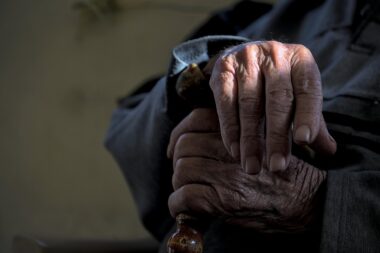Understanding How Aging Affects Your Balance
As we age, our bodies undergo various changes, notably affecting balance and coordination. These changes can stem from a decline in physical strength, flexibility, and sensory functions that help maintain stability. One primary factor is the aging of the vestibular system, which is crucial in detecting changes in head position and movement. This system’s deterioration leads to difficulties in maintaining posture and stability. Additionally, proprioception, or the body’s ability to sense where it is in space, decreases with age. It reduces awareness of body position, contributing to increased fall risks. Strength and balance training can help counteract some of these effects. Engaging in exercises that focus on balance and coordination can enhance stability. Such exercises may include tai chi, yoga, or simple balance activities like standing on one leg. Regular physical activity is essential for mitigating the negative impacts of aging on balance. Health professionals recommend tailored exercise programs to suit individual capabilities and limitations. Improving strength and flexibility can significantly enhance overall balance, reducing the risk of lead injuries.
The Role of Muscles and Joints in Balance
The musculature and joint health play significant roles in maintaining balance, particularly in older adults. With age, muscle mass naturally declines due to a condition known as sarcopenia. This loss can lead to diminished strength, affecting the muscular control required for balance. Joint issues, such as arthritis, further complicate matters by limiting mobility and causing pain. Flexibility decreases as tendons and ligaments become stiffer, impacting the range of motion necessary for maintaining stability. A decrease in muscle strength and joint function contributes to an increased risk of falls among older adults. Therefore, incorporating resistance training and flexibility exercises is vital for improving muscular strength and joint health. Resistance training enhances muscle mass and strength, contributing to better balance control. Additionally, flexibility exercises help maintain or increase the range of motion in the joints. Regular physical activity tailored for older adults can lead to improved body awareness and coordination. This approach enhances overall balance and stability. Communities and healthcare professionals can provide resources for accessible exercise programs that support older adults in maintaining healthy muscle and joint function.
Another crucial aspect of balance is vision, as it supplies critical information about our surroundings. Aging often leads to vision problems, such as cataracts or macular degeneration, impacting depth perception and spatial awareness. These changes can make it difficult to navigate uneven surfaces, observe obstacles, or judge distances accurately. For older adults, maintaining good vision is essential for safe mobility and balance, significantly reducing the risk of falls. Comprehensive eye examinations can help in detecting visual impairments early. Utilizing corrective lenses and managing health conditions that affect vision is vital. Environmental adaptations can also enhance safety, such as ensuring well-lit areas and minimizing tripping hazards. Moreover, participating in activities that stimulate vision and coordinate movement can benefit overall stability. For instance, exercises that include focusing on moving objects while balancing promote visual-spatial awareness. Organizations should encourage collaborative programs where seniors can engage in such activities. This proactive approach not only addresses visual impairments but also fosters engagement through social interaction. Thus, emphasizing the relationship between vision, balance, and coordination fosters a holistic strategy to support seniors’ mobility.
Neurological Factors Influencing Balance
The brain’s function is also paramount in balancing, primarily through coordination of sensory information and execution of motor skills. Aging can lead to changes in cognitive functioning and processing speed, which influence balance. The brain’s ability to integrate sensory inputs is essential for maintaining stability during movement. As age progresses, neural pathways may function less efficiently, making balance control more challenging. Older adults might experience slower reaction times, impairing their ability to respond quickly to balance perturbations. Additionally, conditions such as Parkinson’s disease or dementia can severely affect balance. Engaging in cognitive exercises, alongside physical workouts, can help maintain mental acuity related to coordination and balance. Balance-focused activities that require thought processes, such as dance or sports, engage both the brain and body effectively. These activities promote neural resilience, enhancing the brain’s capacity to manage balance-related tasks effectively. Healthcare providers should advocate multi-dimensional approaches that integrate cognitive and physical activities into fall prevention programs. By addressing both neurological and physical factors, it maximizes the potential for older adults to maintain and improve their balance throughout aging.
Environmental factors, such as the living environment of older adults, significantly influence balance and stability. Homes often contain hazards that can increase the risk of falls, such as loose rugs, cluttered walkways, or poor lighting. Ensuring a safe living space is essential for maintaining independence and reducing accidents. Simple modifications can greatly enhance safety; for example, using non-slip mats or removing obstacles helps create a safer environment. Furthermore, ensuring areas are well-lit can significantly enhance visibility. Handrails in stairways and grab bars in bathrooms can provide additional support, boosting confidence in mobility. Community programs can educate seniors about fall risks and promote home assessments for identifying potential hazards. These initiatives encourage a proactive approach to fall prevention. Many assistive devices, such as walkers or canes, can also improve stability. It is crucial for older adults to feel empowered in their environments. By understanding the importance of a well-maintained living space, both independence and safety can be preserved. Consideration for environmental influences ensures a comprehensive approach to balance maintenance and fall prevention strategies.
Nutrition’s Impact on Balance and Coordination
Nutrition plays a pivotal role in maintaining balance and coordination as we age. A well-balanced diet contributes to optimal physical health, enhancing the body’s ability to manage stability effectively. Nutritional deficiencies can lead to weakened muscles and bones, increasing the likelihood of falls. Calcium and vitamin D are particularly important for maintaining bone density and muscle strength. Inadequate intake of these nutrients can lead to osteoporosis, heightening the risk of fractures from falls. Antioxidants from fruits and vegetables can enhance overall health, supporting cognitive function and neuromuscular coordination. Hydration is equally critical for maintaining balance; dehydration can cause dizziness and cognitive impairments. Older adults should be educated about the significance of good nutrition in their overall health, including balance maintenance. Consulting nutritionists or dietitians can provide personalized dietary recommendations. Community programs can also promote awareness through workshops focused on nutrition and balance. Moreover, encouraging seniors to remain active in meal preparation gives them a sense of ownership over their health. Ultimately, emphasizing a nutritious diet supports the broader strategies for ensuring stability as part of aging.
The impact of aging on balance and coordination is multifaceted, involving physical, visual, neurological, and environmental factors. Awareness of these factors can significantly contribute to effective strategies for fall prevention. Implementing exercise programs focusing on strength, balance, and flexibility is vital for older adults. Integrating cognitive engagement and ensuring safe living environments also plays a critical role. Nutrition must not be overlooked as it supplies essential nutrients affecting muscle strength and overall health. Community initiatives should promote inclusive activities that address these areas holistically, fostering collaboration between healthcare providers, trainers, nutritionists, and community organizations. An interdisciplinary approach to balancing awareness ensures that older adults receive comprehensive support tailored to individual needs. Sharing success stories of improved balance can also motivate others to take similar steps. Encouraging older adults to participate in social activities and classes can nurture social bonds while improving stability. By fostering a community-centric environment focused on balance and coordination, we empower older adults to maintain their independence and quality of life as they age, reducing fall risks and enhancing overall well-being.





